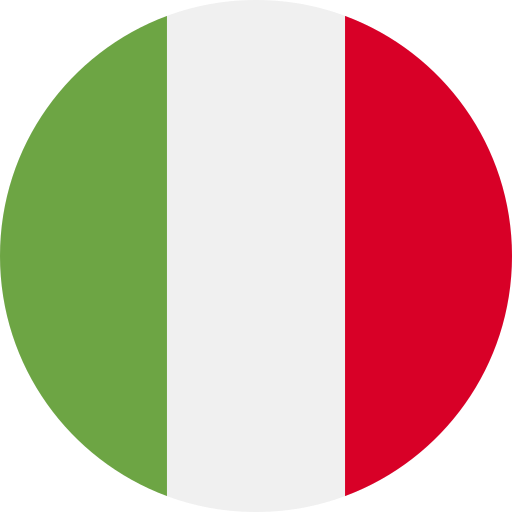The Italian language is a beautiful tapestry woven from centuries of history, culture, and evolution. As I explore its roots, I can’t help but marvel at how this vibrant language has transformed through various influences—from Latin origins to regional dialects that reflect Italy’s rich diversity. Understanding the historical journey of Italian not only deepens my appreciation for the language but also reveals the connections between its past and present.
In this article, I’ll delve into key milestones in the development of Italian, highlighting significant events and figures that shaped it along the way. By uncovering this fascinating history, we can better appreciate how Italian continues to thrive today as a symbol of art, literature, and identity in an ever-changing world. Join me on this journey through time as we unravel the story behind one of Europe’s most cherished languages.
Historical Overview of the Italian Language
The Italian language boasts a rich history rooted in Latin, evolving significantly over centuries. Its journey reflects the cultural and social changes within Italy.
Origins of the Language
Italian originated from Vulgar Latin, spoken by common people during the Roman Empire. This form of Latin diverged from Classical Latin due to regional variations. By the 9th century, distinct dialects emerged across different regions in Italy. The earliest written records date back to the 10th century, with texts like “Placiti Cassinesi” showcasing early forms of Italian.
Evolution Through the Ages
Italian underwent significant transformations during various historical periods. The Renaissance (14th-17th centuries) marked a pivotal era for linguistic development as artists and scholars promoted standardized forms of Italian through literature. Figures such as Dante Alighieri, Petrarch, and Boccaccio played crucial roles in shaping modern Italian with their literary works.
The unification of Italy in the 19th century further solidified the language’s status by promoting a standard dialect based on Tuscan influences. In the 20th century, technological advancements and globalization introduced new vocabulary while regional dialects remained prevalent.
Today, Italian continues to evolve yet maintains its historical roots, reflecting both national identity and diverse cultural influences.
Influence of Latin on Italian
Latin significantly influenced the development of the Italian language, particularly through Vulgar Latin, which served as a foundation for its evolution. Understanding this influence reveals the connections between ancient Rome and modern Italy.
The Role of Vulgar Latin
Vulgar Latin emerged as the spoken form of Latin during the Roman Empire, differing from Classical Latin in vocabulary and pronunciation. Spoken by common people across various regions, it laid the groundwork for regional dialects. After the fall of the Roman Empire, Vulgar Latin evolved into distinct languages due to geographical separation and cultural influences. This transformation resulted in what we recognize today as Italian and other Romance languages.
Regional Variations
Regional variations reflect how local cultures shaped language development. As communities adopted and adapted Vulgar Latin, unique dialects emerged throughout Italy. For instance, Tuscan became prominent during the Renaissance due to influential writers like Dante Alighieri. Other examples include Neapolitan in Naples and Sicilian in Sicily, each showcasing distinctive lexical choices and phonetic characteristics. These variations highlight Italy’s rich linguistic diversity while maintaining a shared heritage rooted in Latin origins.
The Renaissance and Its Impact
The Renaissance marked a pivotal period for the Italian language, characterized by cultural flourishing and standardization. This era not only revived classical knowledge but also significantly influenced linguistic development.
Cultural Flourishing
Cultural flourishing during the Renaissance saw an explosion of artistic, literary, and scholarly achievements. Prominent figures like Dante Alighieri, Petrarch, and Boccaccio emerged as key contributors to Italian literature. Their works utilized vernacular language instead of Latin, making them accessible to a broader audience. This shift encouraged writers throughout Italy to express themselves in their regional dialects while contributing to a collective identity that transcended local boundaries. As these authors gained recognition, their use of the Tuscan dialect began shaping what would become modern Italian.
Standardization of the Language
Standardization of the Italian language occurred due to increased communication among regions and a growing sense of national identity. The printing press played a crucial role in disseminating literature widely; texts were printed predominantly in Tuscan dialect, which was favored because of its perceived elegance and richness. By the 16th century, influential works solidified this standardization process further. Writers like Ludovico Ariosto and Torquato Tasso contributed significantly to establishing grammatical norms while promoting unified linguistic practices across Italy’s diverse regions. Consequently, this standardization not only facilitated clearer communication but also fostered a shared cultural heritage among Italians that continues today.
Modern Developments in Italian
Modern Italian continues to evolve, reflecting both global influences and a commitment to preserving regional dialects. The language adapts to contemporary communication while maintaining its rich heritage.
Global Influence and Adoption
Italian enjoys significant global influence as a language of art, culture, and cuisine. In countries like the United States, Brazil, and Argentina, Italian communities contribute to cultural diversity through music, fashion, and culinary traditions. The popularity of Italian opera has introduced the language to new audiences worldwide. Furthermore, the rise of digital media promotes Italian expressions beyond borders; social platforms facilitate informal learning and exchange among speakers globally. Educational institutions increasingly offer Italian courses due to its cultural significance.
Preservation of Dialects
Regional dialects remain an essential aspect of Italy’s linguistic identity despite globalization pressures. Each dialect reflects unique local cultures and histories; for instance, Sicilian showcases Arabic influences from past conquests. Communities actively promote their dialects through festivals, literature, and music that celebrate local heritage. Additionally, some regions advocate for legal recognition of their dialects to ensure preservation amid modern changes. This dedication fosters a sense of belonging while enriching the broader context of the Italian language.
Conclusion
The journey of the Italian language is a testament to its rich cultural heritage and enduring legacy. From its Latin roots to the vibrant regional dialects we see today, Italian embodies a unique blend of history and identity. Each dialect tells a story reflective of local traditions and customs, reinforcing Italy’s diverse tapestry.
As I dive deeper into this captivating narrative, I’m reminded that Italian isn’t just a means of communication; it’s an art form that continues to evolve. The influence of literature, music, and global interactions ensures that Italian remains relevant in our modern world while celebrating its historical richness. Engaging with this language opens doors to understanding not just Italy’s past but also its vibrant present.








